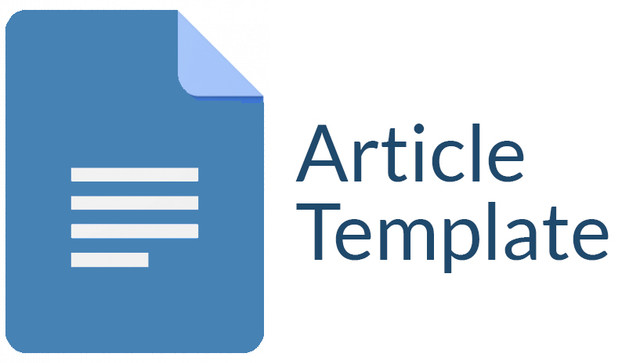Workshop Pendidikan Karakter Melalui Kegiatan Kreatif Untuk Siswa Sekolah Dasar Di Wilayah Kecamatan Bulak
Keywords:
Character education, creative activities, elementary school studentsAbstract
Character education is a fundamental aspect in the formation of a generation with noble and competitive character in the digital era 5.0. Through community service activities in the form of Character Education Workshops through Creative Activities in Bulak District, this program seeks to strengthen the moral values of elementary school students through an interactive and fun approach. The activity was carried out with a blended method model that combined interactive lectures, demonstrations, guided practices, and creativity-based mini projects. The results of the activity showed an increase in students' understanding of the values of honesty, cooperation, and responsibility, accompanied by high enthusiasm for learning. This workshop also strengthens collaboration between universities and schools in supporting the implementation of contextual character education.
Downloads
References
Adha, M. M., Siskandar, R., & Sobri, M. (2022). Implementasi pendidikan karakter melalui pembelajaran kreatif dan inovatif di sekolah dasar. Jurnal Basicedu, 6(4), 5898–5906. https://doi.org/10.31004/basicedu.v6i4.3149
Afandi, R. (2018). Integrasi pendidikan karakter dalam pembelajaran di sekolah dasar. Ta’allum: Jurnal Pendidikan Islam, 6(1), 1–20. http://dx.doi.org/10.21274/ta.2018.6.1.1-20
Ananda, R., & Helmi, F. (2023). Urgensi pendidikan karakter peserta didik di era Society 5.0. Jurnal Pendidikan Tambusai, 7(1), 1625–1630. https://jptam.org/index.php/jptam/article/view/5551
Anggraini, D., Syafrida, S., & Anami, K. (2023). Peran pendidikan karakter usia dini dalam mencegah perilaku bullying pada anak. Jurnal Obsesi: Jurnal Pendidikan Anak Usia Dini, 7(2), 1937–1947. https://doi.org/10.31004/obsesi.v7i2.4431
Cahyani, V. D., & Herliana, F. (2023). Implementasi pendidikan karakter melalui metode bermain peran untuk siswa sekolah dasar. Jurnal Ilmiah Pendidikan Dasar, 10(1), 10–18. https://doi.org/10.30659/pendas.10.1.10-18
Fathurrohman, M. (2019). Menciptakan lingkungan sekolah yang berkarakter. Jurnal Pendidikan Karakter, 9(1), 1–12. https://journal.uny.ac.id/index.php/jpka/article/view/24363
Fauziah, P. Y. (2020). Peran guru dalam mengembangkan karakter peserta didik di sekolah dasar. Jurnal Pendidikan dan Konseling, 2(1), 1–5. https://doi.org/10.31004/jpdk.v2i1.542
Fitri, A., Zubaidah, E., & Susilo, H. (2022). Workshop pengembangan media pembelajaran kreatif untuk guru sekolah dasar. Jurnal Pengabdian dan Pemberdayaan Masyarakat, 6(1), 123–130. https://doi.org/10.29244/jp2m.6.1.123-130
Huda, M., & Anggraini, D. (2023). Sinergi perguruan tinggi dan sekolah dalam mengimplementasikan program P5 di sekolah dasar. Community Development Journal, 4(2), 4376–4380. https://doi.org/10.31004/cdj.v4i2.14652
Jannah, M., & Adawiyah, R. (2022). Optimalisasi golden age anak melalui pendidikan karakter berbasis keluarga. Al-Athfal: Jurnal Pendidikan Anak, 8(1), 17–32. https://doi.org/10.14421/al-athfal.2022.81-02
Downloads
Published
Issue
Section
License

This work is licensed under a Creative Commons Attribution-ShareAlike 4.0 International License.
Authors who publish with this journal agree to the following terms:
1. Copyright on any article is retained by the author(s).
2. The author grants the journal, right of first publication with the work simultaneously licensed under a Creative Commons Attribution License that allows others to share the work with an acknowledgment of the work’s authorship and initial publication in this journal.
3. Authors are able to enter into separate, additional contractual arrangements for the non-exclusive distribution of the journal’s published version of the work (e.g., post it to an institutional repository or publish it in a book), with an acknowledgment of its initial publication in this journal.
4. Authors are permitted and encouraged to post their work online (e.g., in institutional repositories or on their website) prior to and during the submission process, as it can lead to productive exchanges, as well as earlier and greater citation of published work.
5. The article and any associated published material is distributed under the Creative Commons Attribution-ShareAlike 4.0 International License









